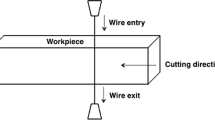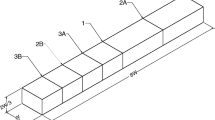Abstract
Using a statistical model derived for cleavage induced by hard particles, an analysis has been carried out of a newly defined critical tensile stress for cleavage, i.e. the statistical mean stress with respect to cleavage fracture probability. The results of the analysis show that the critical tensile stress (cleavage stress) is highest for a precracked bar, intermediate for a notched bar and lowest for a smooth bar, owing to the fact that small particles are possible to trigger cleavage when stress distribution in a bar is uneven. The cleavage stress for the precracked bar is found to decrease rapidly with increasing temperature while those for the notched and smooth bars remain almost constant. The cleavage stresses for the precracked, notched and smooth bars can be correlated through a definite formula. For a pure-bending notched bar, the conventional cleavage stress (maximum stress in the bar) is found to be a good approximation of the new cleavage stress. The difference between the two will increase when stress gradient becomes steeper.
Similar content being viewed by others
References
J.F. Knott, Proceedings of the Royal Society of London A285 (1965) 150–159.
J.F. Knott, Journal of the Iron and Steel Institute 204 (1966) 104–111.
R.O. Ritchie, J.F. Knott and J.R. Rice, Journal of the Mechanics and Physics of Solids 21 (1973) 395–410.
D.A. Curry and J.F. Knott, Metal Science 13 (1979) 341–345.
D.A. Curry and J.F. Knott, Metal Science 14 (1980) 319–326.
A. Pineau, in Advances in Fracture Research, Proceedings of 5th International Conference of Fracture, Paris, France, Vol. 2 (1981) 553–577.
A.G. Evans, Metallurgical Transactions A 14A (1983) 1349–1355.
Tsann Lin, A.G. Evans and R.O. Ritchie, Acta Metallurgica 34 (1986) 2205–2216.
X.X. Xu, Q.G. Cai, Y. Su and W.D. Ma, Materials Science and Technology 5 (1989) 913–917.
C.X. Hou, Q.G. Cai, Y. Su and S.Y. Zheng, in Advances in Fracture Research, Proceedings of 6th International Conference on Fracture, New Delhi, India, Vol. 2 (1984) 1415–1422.
X.X. Xu, Y. Su and C.X. Hou, Transactions of Metal Heat Treatment 8 (1987) 103–104 (in Chinese).
E. Orowan, Transactions of the Institution of Engineers and Shipbuilders in Scotland 89 (1945–6) 165–215.
W. Weibull, Ingeniörsventenskapsakademiens Handlingar 151 (1938) 45.
Jayatilaka Ade S, Fracture of Engineering Brittle Material, Applied Science Publisher LTD, London (1979).
W.D. Ma, C.X. Hou, X.X. Xu, W.Z. Zhou and Q.G. Cai, in Advances in Fracture Research, Proceedings of 7th International Conference on Fracture, Houston, USA, Vol. 1 (1989) 471–478.
X.X. Xu, Q.G. Cai, Y. Su and W.D. Ma, International Journal of Fracture 41 (1989) 275–282.
R. Hill, The Mathematical Theory of Plasticity, Clarendon Press, Oxford (1950).
R.M. McMeeking, Journal of the Mechanics and Physics of Solids 25 (1977) 357–381.
D.M. Tracey, Transactions of ASME, Journal of Engineering Materials and Technology (1976) 146–151.
K. Wallin, Metallurgical Factors Affecting Cleavage Fracture in Steel, Research Report No. 46, Technical Research Center of Finland, Espoo, Finland (1987).
K. Wallin, T. Saario and K. Torrönen, Metal Science 18 (1984) 13–16.
X.X. Xu, Doctoral dissertation (in Chinese), Tsinghua University (1989).
A.R. Rosenfield, D.K. Shetty and A.J. Skidmore, Metallurgical Transactions A 14A (1983) 1934–1937.
Author information
Authors and Affiliations
Rights and permissions
About this article
Cite this article
Xu, X.X., Cai, Q.C. & Su, Y. A tensile stress criterion for cleavage in precracked, notched and smooth bars. Int J Fract 50, 51–65 (1991). https://doi.org/10.1007/BF00035168
Received:
Accepted:
Issue Date:
DOI: https://doi.org/10.1007/BF00035168




